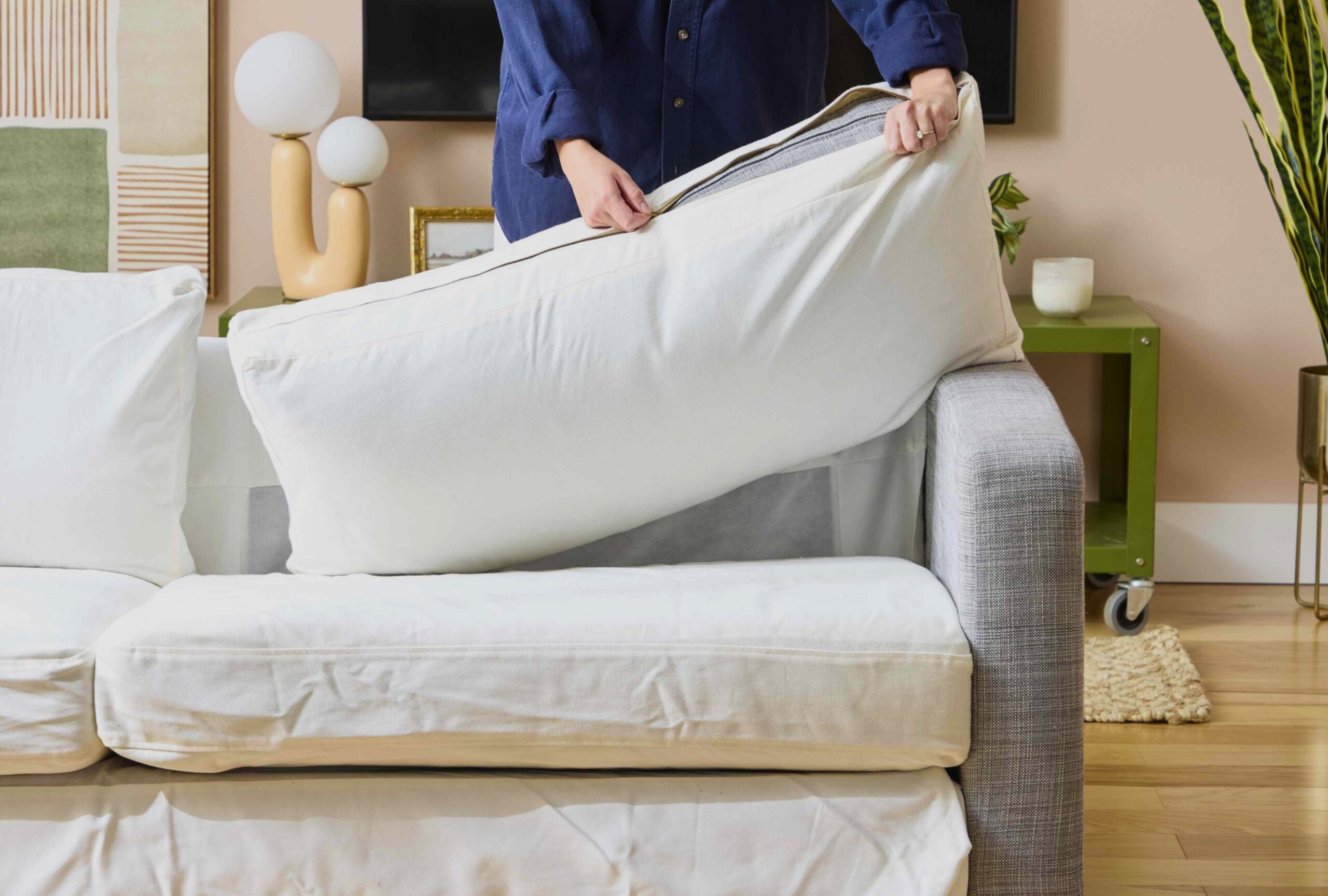A comfortable, inviting couch is a home’s centerpiece, but over time, cushions inevitably lose their shape. Fortunately, restoring a saggy sofa doesn’t always require costly repairs. Furniture specialists offer practical solutions – from quick fixes to more involved refurbishments – to keep your seating looking its best.
Tighten Support Screws for Enhanced Stability
Loose screws often contribute to cushion sag, especially in older models. Begin by carefully removing the fabric covering the couch’s base. Vanessa Garcia, a home furniture specialist, explains that loose screws are easily identifiable by touch. “You can feel them—they’re obviously not secure.”
If screws are worn, replace them with identical types from a hardware store or contact the original retailer for replacements. This simple adjustment can significantly improve cushion support.
Rotate Cushions for Even Wear
Regular maintenance can prevent extreme sagging. Flip and fluff cushions every few weeks, or more often if the couch sees heavy use. This redistributes wear, preventing permanent indentations. The key is consistency—small adjustments over time yield the best results.
Replace the Support Platform for Severe Sagging
When cushions sink deeply, the underlying platform may be failing. Stretched webbing is a common culprit, and replacement requires more extensive work. Peter Triestman, an antique restoration expert, warns that this is a last resort for heirloom or emotionally valuable furniture. “Sofas are upholstered from the bottom up; fixing the foundation means removing all the upholstery.”
Choose the Right Cushion Fill
The type of stuffing dramatically affects a sofa’s longevity. Dunlap process natural latex foam rubber and talalay process latex foam rubber are durable options, lasting decades with a comfortable feel. Triestman emphasizes matching the fill to the original design. “Each piece of furniture is optimized for a particular upholstery; stick with what works.”
Re-Fluff Down Cushions When Needed
Down and feather cushions require more frequent maintenance than modern spring-supported sofas. Regular re-fluffing restores volume, while other cushion types may only need attention if sagging becomes noticeable. Avoid overdoing it—only address gaps as they appear, rather than micromanaging the furniture.
Ultimately, maintaining a firm, comfortable couch is about proactive care. Simple adjustments like tightening screws, rotating cushions, and choosing durable fill materials can prevent major issues and extend your sofa’s lifespan.
